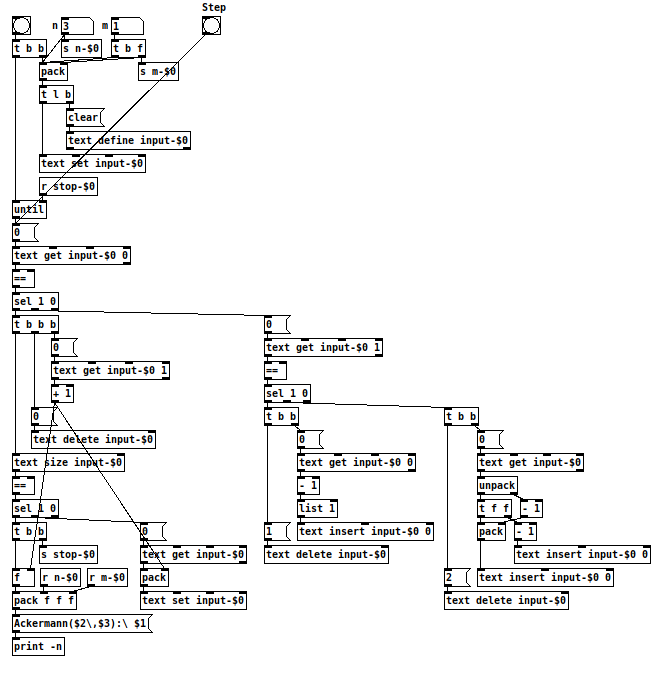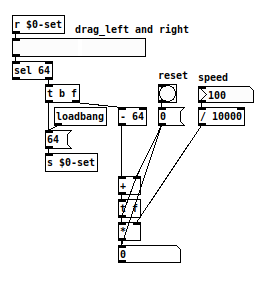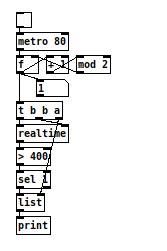-
-
-
 ingox
posted in technical issues • read more
ingox
posted in technical issues • read more@oid No question. I just wanted to show this way of implementing recursion in Pd. Isn't that a technical issue?

-
 ingox
posted in technical issues • read more
ingox
posted in technical issues • read moreThe Ackermann function is a total computable function that is not primitive recursive. That means that it will theoretically always produce a result, but it can not be reduced to a function that only uses loops instead of recursion.
The function uses very many of recursive calls and gets very large results even for rather small inputs.
In my implementation of the Ackermann function in Pd, it looks at first glance as if it would only use [until], so just a loop, and no recursion.
But really the recursion is implemented using [text], where all the incomplete intermediate results are saved until they are completed and used as inputs for the next iteration, respectively.
You can watch the process by opening the [text] and click the step button for each step of the calculation.
Be careful, while Ackermann(3,5) and Ackermann(4,0) are getting calculated quickly, it didn't finish calculating Ackermann(4,1) on my computer even after two hours.

-
 ingox
posted in technical issues • read more
ingox
posted in technical issues • read more@esaruoho Since you already numbered the abstractions you can use [namecanvas subpatch-$1] to give them individual names. Then you can use a number to [;subpatch-%1 vis 1( to show them. I don't know if there is a way to just open an array via message. If not you can instead put a subpatch into each abstraction that only contains the array and open these with [namecanvas].

-
-
-
-
 ingox
posted in technical issues • read more
ingox
posted in technical issues • read more@Buck At least you didn't burn the house, smashed the computer and moved to a hotel with a brand new laptop to find that out.

-
 ingox
posted in I/O hardware diy • read more
ingox
posted in I/O hardware diy • read more@dgbillotte It just stores each mode and respective value inside [text]. You can click on [text define] to see what is happening. When changing mode to retrieve the value and before writing, it searches for the mode in the first column if it is already there and uses the respective line to read or write. Otherwise it uses 0 as value and writes at the end of [text].



